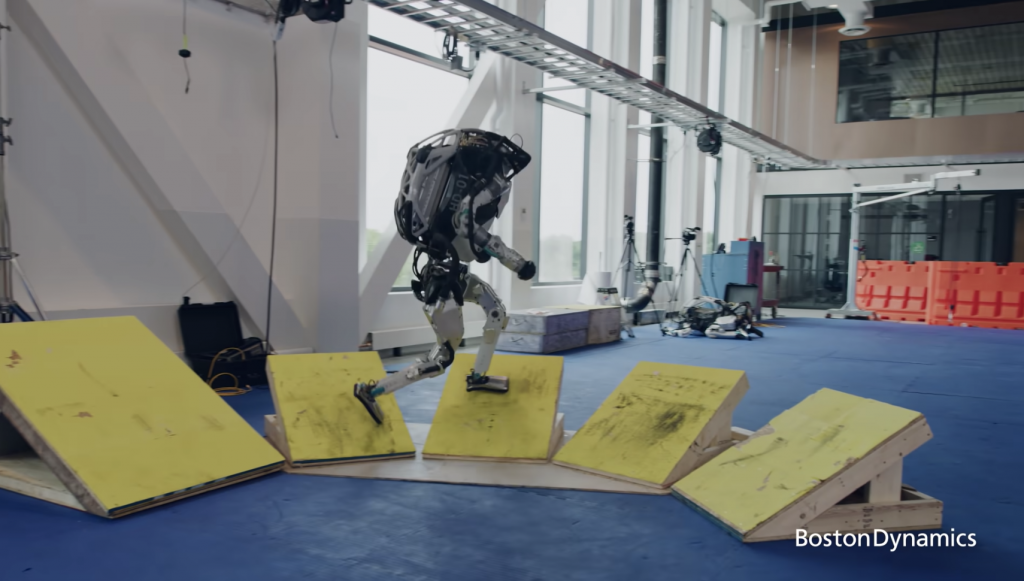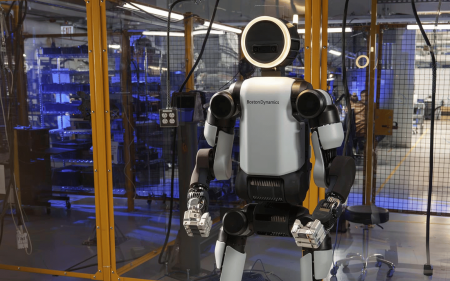There’s a moment, right at the beginning of Boston Dynamics’ most recent demo video for Atlas, its humanoid robot, where you know that you should be freaking out about how this mechanical thing is moving. It crops up again and again, whenever you realise that this robot is jumping, flipping and balancing better, unassisted, than you’ve ever seen a robot perform before.
But by the time you get to the end of the video, all that’s left is admiration. Admiration for Atlas’ performance — because it sure has come a long way — but also for the team behind its creation. It might just be a test-bed for robotics innovation but we can actually see its potential when it comes to, say, setting up a Mars colony now.
No shrugging at this Atlas
If you watch the minute-long video yourself, you’ll see just why we’re so enamoured with Boston Dynamics’ creation. It tackles a couple of circuits of a preplanned obstacle course, with a misstep here and there (which is corrected in an almost human manner) without batting an eye — because it doesn’t have any eyes. And you can’t blink a camera.
Visually, it’s very impressive, but there’s a lot that goes into making Atlas perform the way that it does. Boston Dynamics also has a ‘meet the team’ video that gives a whole lot of insight into what makes Atlas do what it does, as well as introduces us to the people who created this robot athlete. It’s a whole lot more information than we’ve had beyond just ‘oooh, pretty…”
One day, we might send robots like Atlas to the moon or to Mars, to set up a liveable environment for humans to occupy when we follow at a later stage. That’s a whole lot safer than dumping a load of kit and then some astronauts and get them to set up their homes on arrival. That works if you’re camping in the mountains (but even there, there’s a chance you’ll die). It’s a little less effective when you’re doing it on the surface of Mars.




